Two-minute review
Let’s start with the size of what is a relatively small lens. Packed away, the RF 100-400mm F5.6-8 IS USM measures just 6.5 inches / 165mm from end to end, with a diameter of 3.15 inches / 80mm. It’s also impressively light – just 1.4 lbs / 635g.
The RF 100-400mm lens doesn’t come with a hood, but those who want to cut down on non-image-forming light like a flare – or simply have a bit of protection – can opt for the ET-74B, a £55 / $44 lens hood that’s backward-compatible with the EF 70-300mm F4-5.6 IS II USM lens.
To offer some perspective, Canon’s pro version of this lens, the RF 100-500mm F4.5-7.1 L IS USM, is about two inches / 50mm longer (physically; not focal length) but is nearly 1kg heavier. Certainly, the 100-400mm has a spectacular amount of reach for the weight. It’s actually so light that you don’t need a dedicated tripod foot.
In use, although the lens changes length significantly when you zoom in, it doesn’t upset the balance on a tripod. Space is put to good use around the lens. The zoom ring is particularly broad and easy to grab hold of when that elusive subject suddenly appears somewhere different from where you expected.
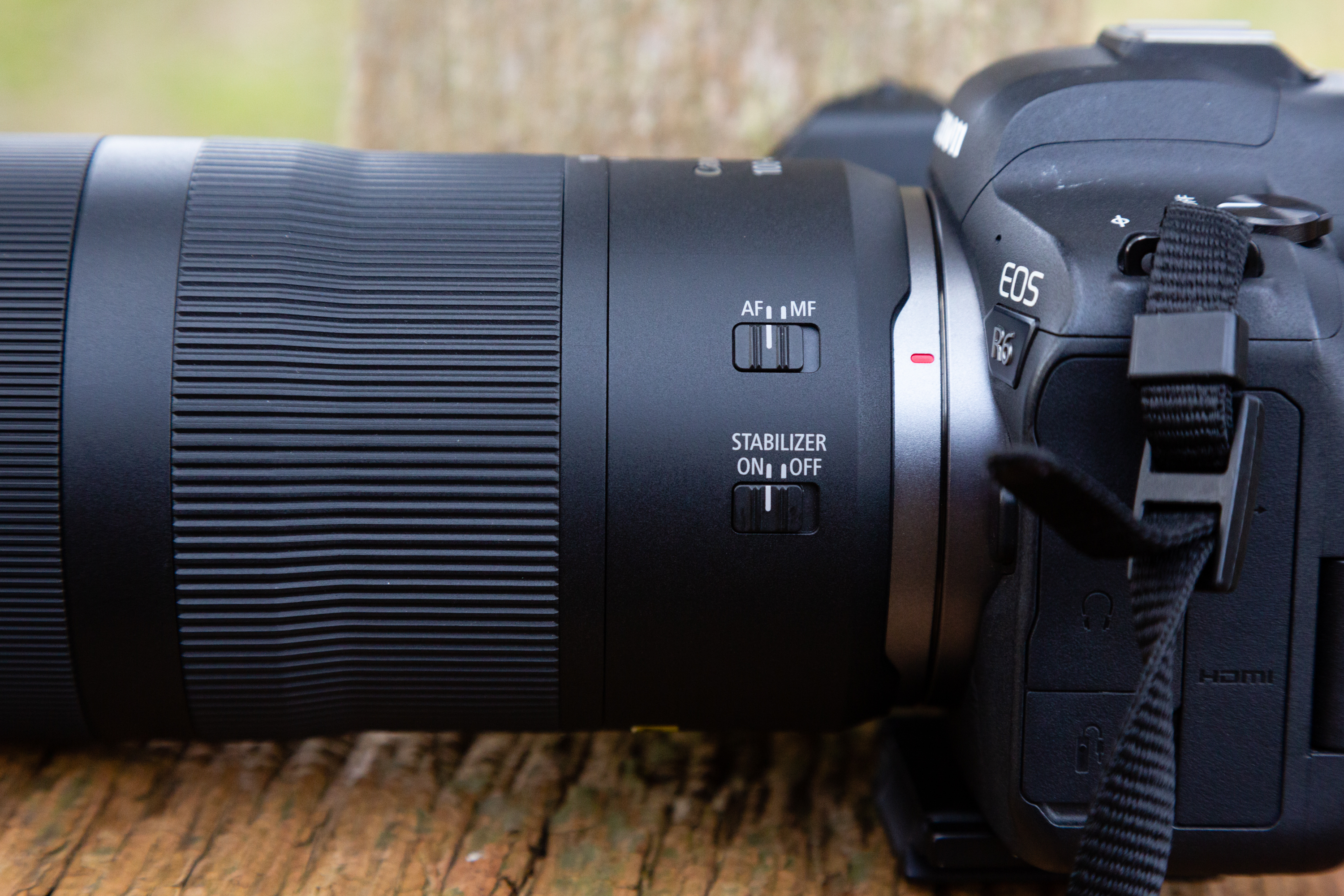
You get a focal length lock button to stop the lens extending in your bag, although, unlike some other superzoom lenses, it only locks the lens at its 100mm setting – there’s no option to lock the lens at other focal lengths to stop it creeping backwards if it’s mounted on a tripod and pointing up.
The lack of weather sealing might be a consideration for those shooting in inclement weather, and while there’s an image stabilizer, it only has one mode, rather than the panning-and-tilting or tilting-only stabilization of other lenses.
There’s also no focus limiter, which could be useful if you’re trying to stop the lens going through its entire range of focus distances in, say, low light or when you’re shooting through a busy foreground. As it is, the RF 100-400 will focus from infinity down to as close as 88cm / 2.89 feet. How close it can focus actually breathes a bit as the lens zooms in and out – at 100mm it focuses as close as 120cm / 3.94 feet; at 400mm it focuses as close as 105cm / 3.44 feet.
The RF 100-400 doesn’t have a continuous aperture, which means the aperture closes down as you zoom in. At 100mm, the largest aperture you can get is f/5.6 – not the last word in telephoto f-stops but not a disaster.
At 400mm the smallest aperture you can get at is f/8 – it sounds tight, so what does it mean for your photography? In reality, if you’re shooting wildlife and want it sharp, reaching for shutter speeds in excess of 1/500 sec is going to cost you in terms of ISO. It depends on the weather, naturally.
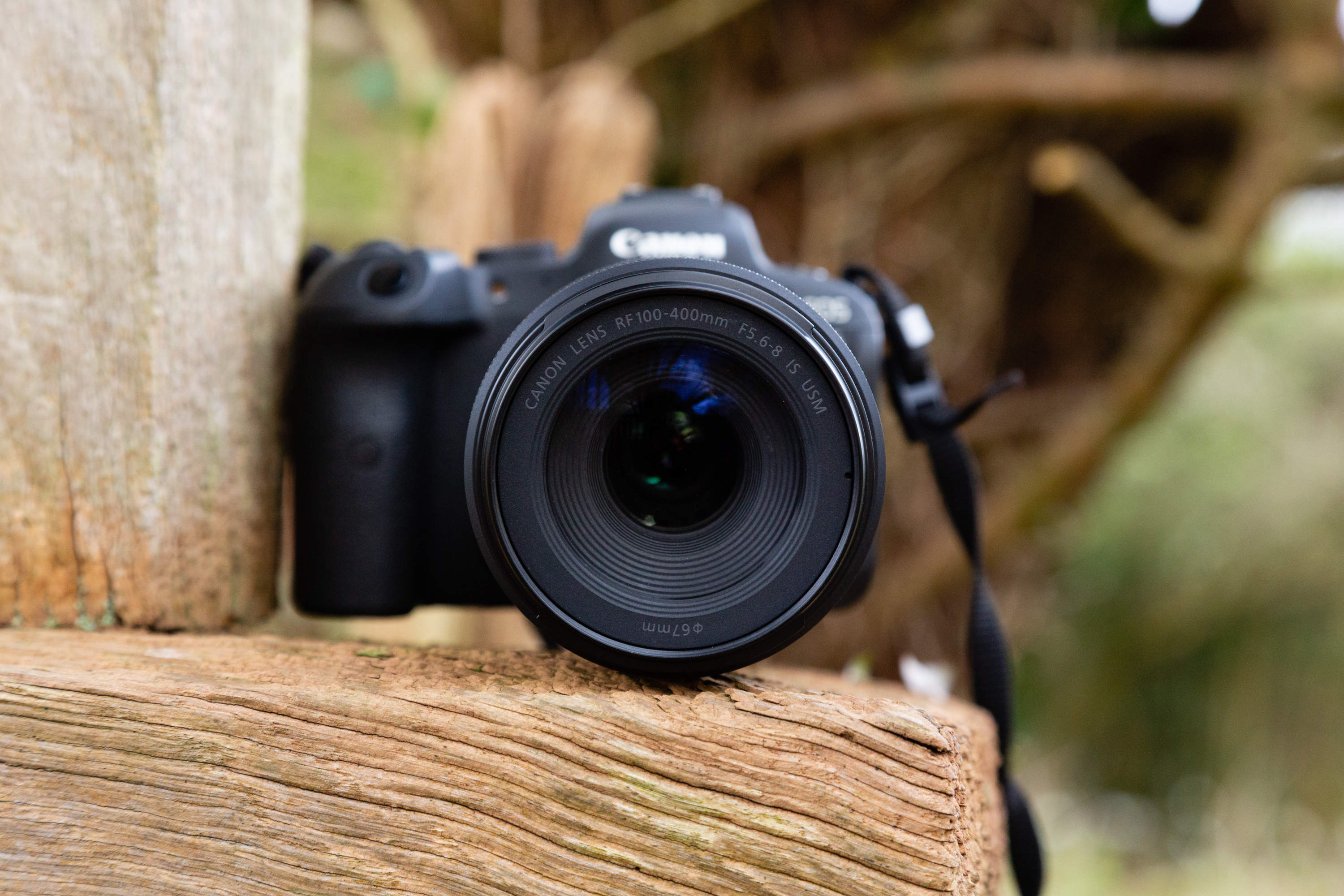
In the course of testing our review sample, we spotted a few red kites – a medium-sized raptor. Opting for a definitely-sharp shutter speed of 1/4000 sec, and the maximum-available aperture of f/8 at 400mm, we found ourselves using ISO 3200 on the EOS R6. We could probably have shot 1/2000 sec with no real impact on motion blur, so ISO 1600 would have been an option. That was in pretty good light.
It’s worth remembering that the EOS R6 and R5 are superb performers when it comes to high ISO imaging, so shooting ISO 3200 for example isn’t the end of the world – but it is high enough that you would notice a difference on a lens that allowed you to open up to f/4.
Elsewhere the lens acquits itself well. It’s not unbelievably sharp but nor is it soft. There’s no barrel distortion to speak of, and while you’ll be able to see a small amount of vignetting at larger apertures at 100mm, once you start zooming in the problem resolves itself. We were also pleased to note a lack of chromatic aberration.
The image stabilization is impressive – we were able to get sharp images from shutter speeds as slow as 1/15 sec at 400mm. We’d recommend shooting continuous bursts at this shutter speed, of course, to increase your chances, but it does mean the RF 100-400 has the potential to do a good job on static subjects if the light really gets away from you.
Canon RF 100-400mm F5.6-8 IS USM Sample Images

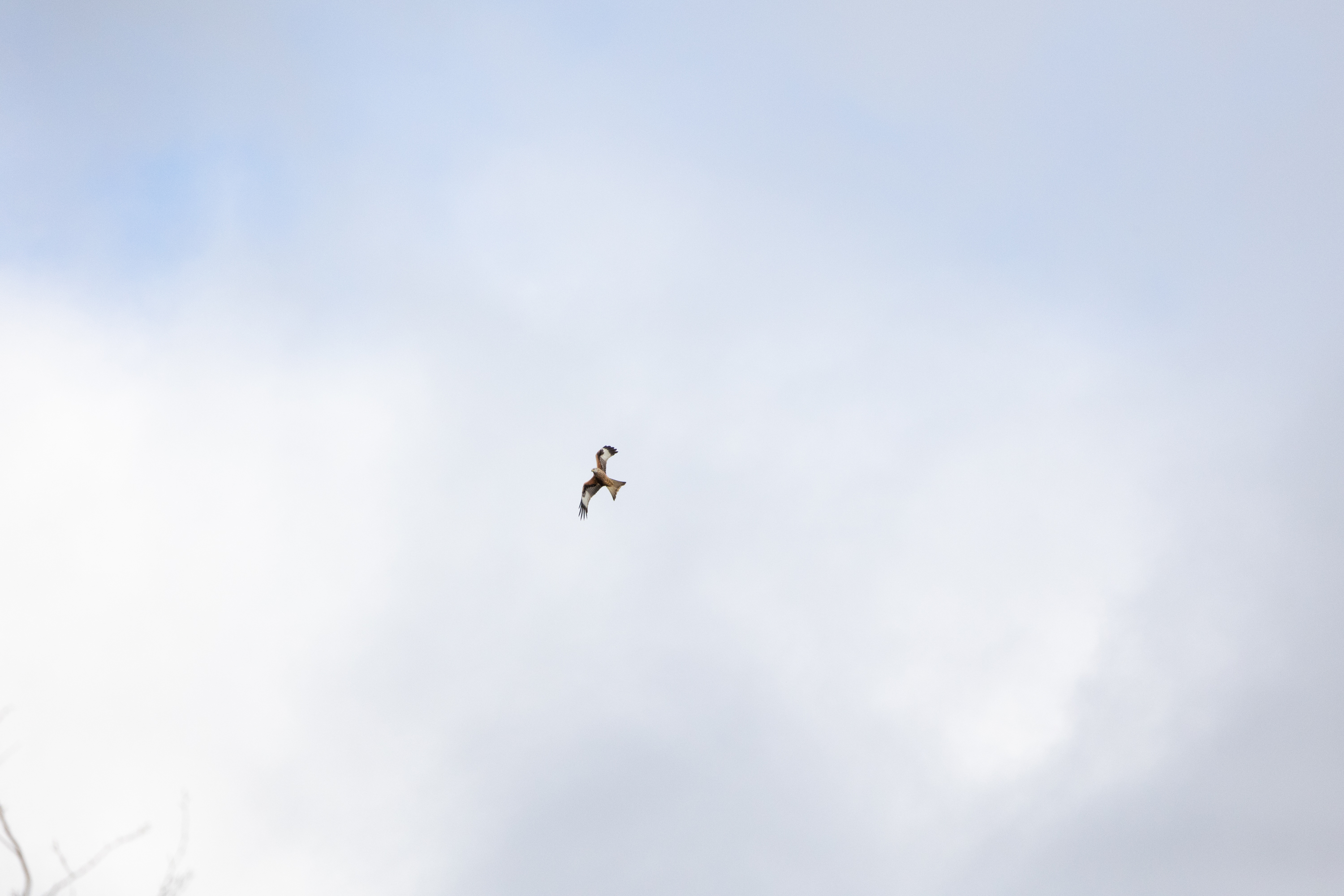
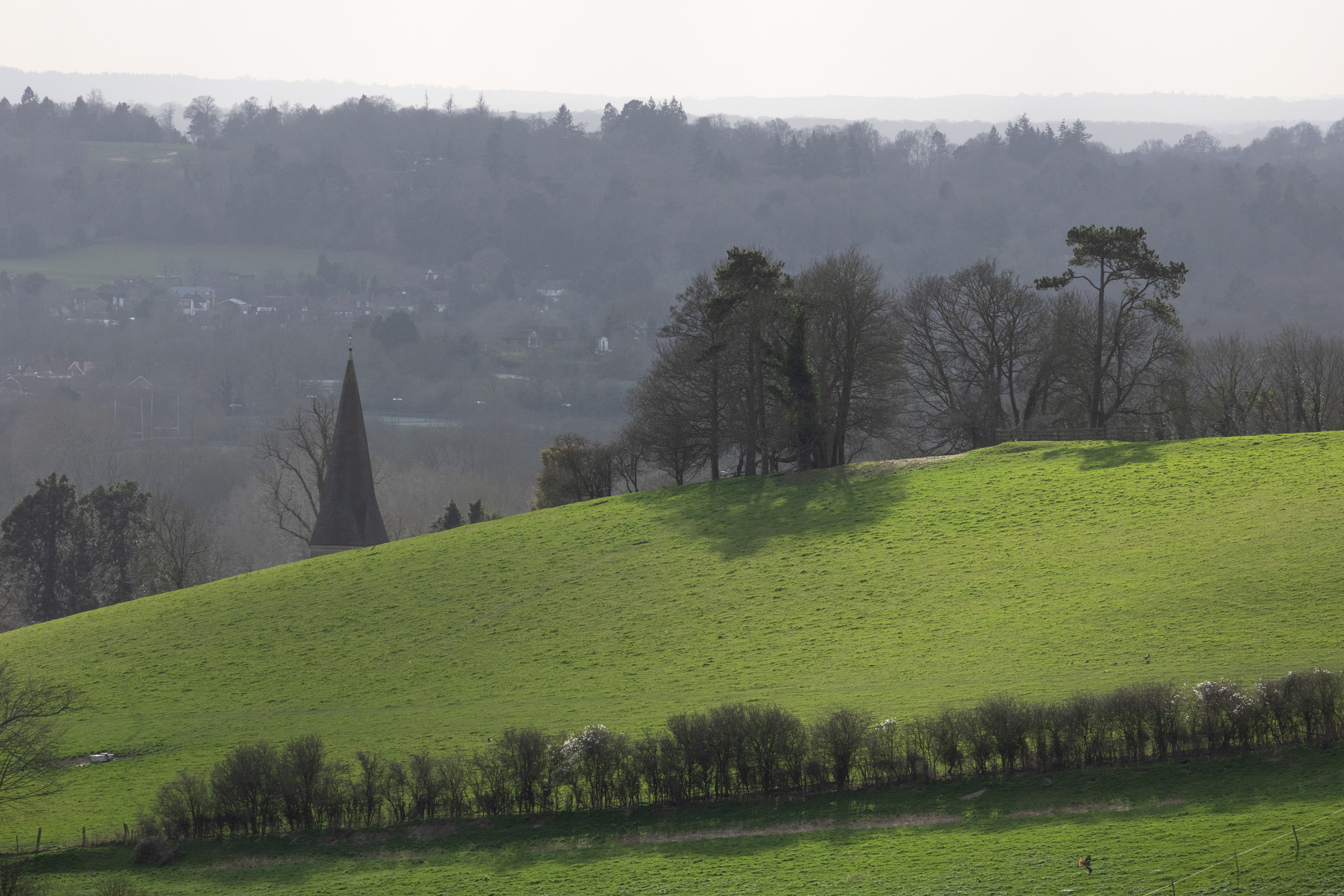
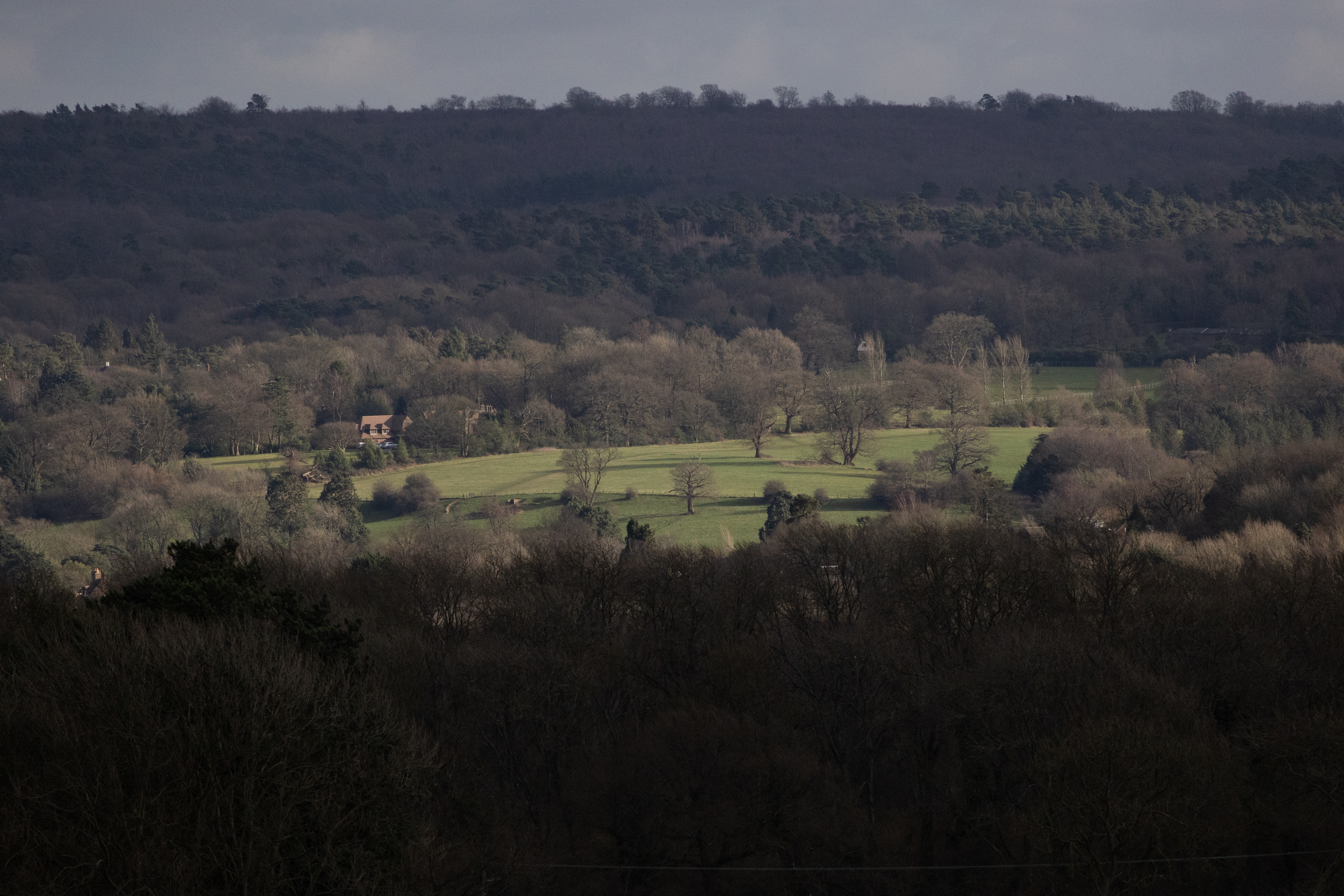
If you have an RF-EF mount adapter you should know that there are a lot of alternative lens options out there from third-party manufacturers. For example, those who want loads of reach could consider the Sigma 150-600mm (about £150 / $150 / AU $ 300 extra) – but it’s significantly longer and with a larger maximum aperture at the zoom end; albeit with a bit more vignetting at large apertures.
If you want to shoot using the native RF mount there are options for that as well. For example, if you don’t want a zoom lens you could opt for either the RF 600mm F11 IS STM (about £860 / $699 / AU $1,219) or the RF 800mm F11 IS STM (about £1,100 / $1,000 / AU $1,500). Bear in mind that not only is there no zoom but both these lenses also have a fixed f/11 aperture, making them perhaps a little less suited to those starting out. If you’re feeling flush, the Canon RF 100-500mm F4.5-7.1 L I USM is not only a little longer and brighter than the RF 100-400 but is also weather sealed – albeit for about £2,000 / $2,000 / AU $3,000 (approx) more.
Should I buy the Canon RF 100-400mm F5.6-8 IS USM?
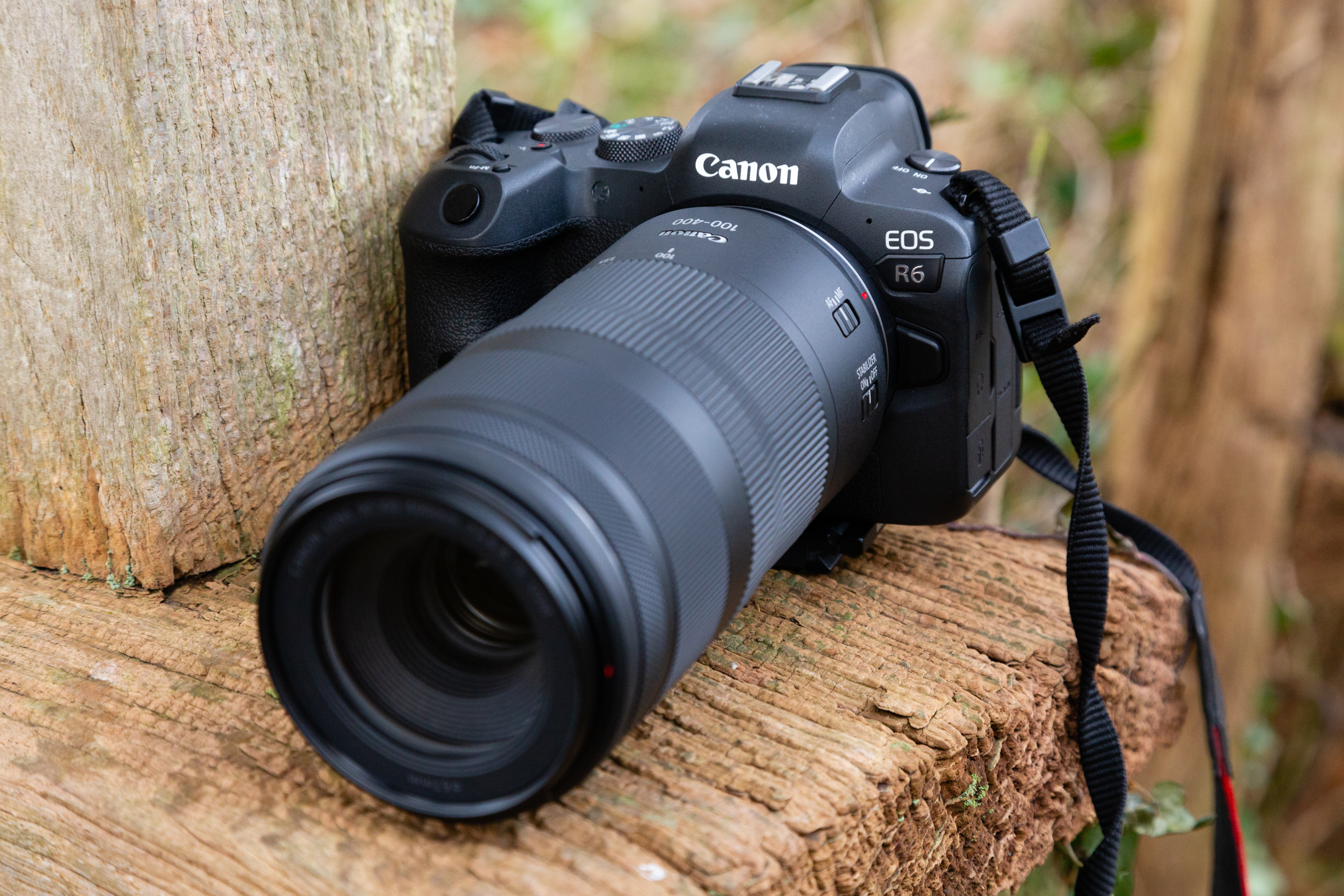
Buy it if...
Don't buy it if...
from TechRadar - All the latest technology news https://ift.tt/5oeVHZ0

No comments:
Post a Comment